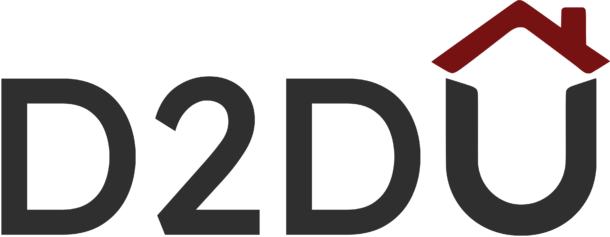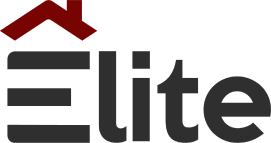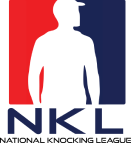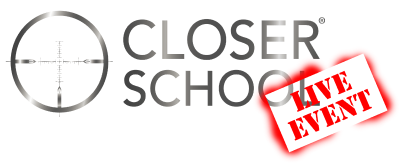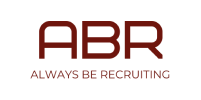A rep who can run laser-focused discovery, navigate a CRM blind-folded, and conduct a punchy 20-minute Zoom demo will out-close the competition every time. Yet only 26 % of buyers say reps are “good listeners,” and half abandon deals because the seller shows “little understanding of my business.”
The cure isn’t a “raw-talent” hiring spree it’s a repeatable inside sales training engine that hard-codes essential skills, technology, and coaching into your team’s daily rhythm. This playbook delivers actionable inside sales training tips, practical techniques, and performance-boosting frameworks designed for sales managers, enablement leaders, trainers, and front-line reps. Master the inside sales strategies that improve productivity, increase conversions, and strengthen every stage of your sales funnel.
1. Core concepts of inside sales
Inside vs outside—know the lane you’re training for
Clarity matters when it comes to training reps. Let’s quickly set the stage:
- Inside Sales: These reps handle sales remotely via phone calls, video meetings, emails, and social media interactions. Since they’re desk-based, inside reps often touch about three times more accounts per week than their counterparts out in the field, though they usually have smaller territories.
- Outside Sales: Field reps still dominate in-person, complex, board-room-level deals. But here’s a plot twist—increasingly, customers (even for six-figure deals) are totally comfortable making purchases fully online. So, while face-to-face interaction holds power, the remote trend is here to stay.
The Difference Between Inside and Outside Sales
- Inside = remote. Reps sell via phone, email, video and social, often touching 3× more accounts/week than field teams while covering smaller territories.
- Outside = face-to-face. Field reps still win ultra-complex, board-room deals—but 65 % of B2B buyers are comfortable closing six-figure deals completely online.
The Role of Technology in Inside Sales
n inside sales, technology isn’t just useful—it’s your territory.
- CRM as the Single Source of Truth: Your CRM (like Salesforce or HubSpot) is the backbone. Teams that keep their CRM tidy and regularly updated close more deals because they’re not wasting hours hunting down information. Everything reps need—from past conversations to next steps—lives right there.
- Why Video Beats Phone Calls: Adding video—especially with live screen-sharing—builds stronger relationships. Prospects trust what they can see. Even simple things like eye contact and body language help prospects feel connected, leading to higher win rates.
| Live screen-share and webcams lift win-rates 8-15 %. |
- Automation with Sales Engagement Tools: Tools that automate repetitive tasks like follow-up emails and reminders free up your reps for actual selling. Think about saving 1-2 hours a day per rep—more time means more calls, more meetings, and more closed deals.
| Sales-engagement platforms automate cadences, freeing reps 1-2 hours per day for selling tasks. |
Buyer Behavior in the Digital Age
Modern buters aren’t starting from scratch: They arrive on your doorstep armed with peer reviews, competitor comparisons, and pricing insights. But their attention spans? Shorter than ever. Most buyers spend less than 11 seconds deciding if your email is worth opening. This means your training must teach reps to add real insights quickly and clearly—not just repeat what prospects already found online.
2. Foundational Skills to Train Inside-Sales Reps On
Communication & Listening
Communication goes way beyond talking. Teach reps to actively listen mirroring the prospect’s tone, paraphrasing their concerns, and clearly summarizing the next steps. Incorporating these exercises into a structured sales bootcamp ensures reps develop strong listening habits early. Formalizing these drills can dramatically speed up deals, because prospects trust reps who truly understand their challenges.
Product & Industry Knowledge
Ensure reps deeply understand your products and industry.
- Competence → confidence.
In one Highspot/ATD study, reps with quarterly product-cert tests closed 12 % larger ACV.
Regular product certifications keep reps sharp and confident. Prospects buy from experts, not generalists—give your team everything they need to master your offering.
Prospecting & Lead Qualification
Every deal isn’t equal—teach reps how to match qualification frameworks to deal complexity:
| Framework | Best Fit | Key Question |
| BANT | High-volume SMB | “Is budget approved?” |
| CHAMP | Mid-market consultative | “Which challenge outranks all others?” |
| MEDDIC | Enterprise | “Who is the Economic Buyer and what are their metrics?” |
3. Training for the Sales Process
Crafting the Perfect Cold-Call Script
15-Second Opener: State their name, use a micro-personalized detail (like noting something from LinkedIn), then ask permission to continue.
Problem Statement: Clearly state a relevant pain point—e.g., “I noticed you’re hiring salespeople; companies your size often struggle to ramp them quickly.”
Curiosity Hook: End with an engaging question: “Would it make sense to quickly share how others solved this?”
This permission-based approach feels natural and books far more meetings.
Email Outreach Best Practices
Emails must be compelling.
Teach reps:
Consistent testing: Regularly A/B test different approaches and use what works best consistently.
Subject lines that trigger curiosity or urgency: E.g., “Quick idea before Q3 planning” grabs attention.
Short and focused body: Limit to 90-125 words, include only one clear call-to-action.
Conducting Effective Virtual Sales Meetings
Virtual meetings can close big deals if done right:
- Position webcams at eye-level for direct “eye-contact” and rapport.
- Clearly outline the meeting agenda upfront.
- Keep meetings interactive—pause every few minutes to ask questions, ensuring your prospects stay engaged.
4. Tools and Tech Training
CRM Mastery (Salesforce / HubSpot)
Reps should log every touch, set next-step tasks, and maintain < 5 % stale opps.
Reps should:
- Log every interaction, schedule next-steps, and regularly clear out stale opportunities.
- Understand pipeline management—clean pipelines mean accurate forecasts and efficient selling.
Automation & Sales-Enablement Tools
Introduce automation for:
- Email sequences and follow-ups.
- LinkedIn outreach and triggers.
Demo automation tools like Consensus cut down unnecessary manual tasks, significantly speeding up the sales cycle.
Using Analytics to Improve Performance
Teach reps to read and interpret simple analytics dashboards that clearly track:
- How many leads turn into meetings.
- How many meetings lead to qualified opportunities.
- Average deal size and length of the sales cycle.
Using analytics ensures your reps understand their performance clearly, leading to targeted improvements.
Dashboards tracking lead-to-meeting rate, meeting-to-SQL, and deal size improve forecast accuracy by 10 %.
5. Coaching and Continuous Development
Role-Playing Sales Scenarios
Regular role-play sessions using real scenarios help reps master objection handling, demos, and cold-calls. A weekly 30-minute role-play can significantly improve performance by building muscle memory.
Peer Reviews & Shadowing
Set up safe spaces—like “film rooms”—where reps can review each other’s calls using the STAR method (Situation, Task, Action, Result). This helps everyone learn from real-world examples and continually improve.
Manager 1-on-1s based on GROW
- Goal: “Hit 120 % quota Q3.”
- Reality: “Pipeline $200K short.”
- Options: Upsell motion vs. new logo blitz.
- Way-forward: Commit to five executive-level outreach/day.Structured coaching lifts rep retention 15 %.
Ongoing Feedback & One-on-Ones
Structured coaching using the GROW model—Goal, Reality, Options, Way-forward—helps managers clearly communicate expectations, review pipeline status, and set actionable next steps. Structured feedback keeps reps engaged and committed to ongoing growth.
6. Creating a Scalable Sales-Training Program
Onboarding Playbooks – Standardise New-Hire Ramp-Up
Why bother?
- Reps who must “figure it out” wander for weeks.
- Teams with a written playbook shave a quarter off ramp-time and boost year-one retention about 20 percent.
Clear onboarding playbooks eliminate guesswork. Reps with clear guidelines start selling sooner, stay longer, and hit quotas faster.
- Include company overview, key customers, detailed product guides, clear sales process stages, and daily KPIs.
- Clearly define targets at days 30, 60, and 90 to track ramp-up.
A solid playbook doesn’t just speed onboarding—it creates confident reps who consistently hit their numbers.
Must-have sections
| Section | What to include | Why it matters |
| Company & Ideal-Customer Snapshot | org chart, hot neighbourhoods, best-fit homeowner personas | New hires know who to knock first. |
| Product Cheat-Sheets | feature-to-benefit bullets, quick demo script, common objections | Competence builds confidence; faster to pass product certs. |
| Sales Process Map | door-knock → discovery → demo → close stages, plus sample CHAMP/BANT questions | Keeps CRM data tidy, so forecasts aren’t guesswork. |
| Daily KPIs | doors, demos, signed deals targets | Shows the link between activity and payday. |
Roll-out cadence
- Week 0 (pre-boarding) – Email the playbook plus a 5-min Loom tour so Day 1 isn’t a scavenger hunt.
- Days 1-10 – Mix < 8-minute videos with live role-plays; finish with a discovery-call check-off.
- Day 30 / 60 / 90 – Tie goals to the funnel (e.g., 10 demos booked by Day 30; first contract by Day 90).
LMS & Training Resources – Video, Quizzes, Interactive Drills
Choosing a platform
- Pick one that plugs straight into your CRM so lesson completions auto-log next to the pipeline.
- AI course builders that can turn a PDF into a micro-module cut content-build time in half.
- Reps learn on the go—over half watch lessons on their phone between doors.
Formats that stick
| Format | Best for | Engagement lift |
| Short scenario videos (≤ 3 min) | Objection handling | +20 % completions |
| Branching quizzes | Qualification frameworks | Double knowledge retention |
| Simulated call role-plays | Cold openers, demo pivots | 5-point win-rate bump |
Measuring Training Effectiveness – Link Learning to Performance
Training your sales reps is just half the battle. How do you know if it’s really paying off? Let’s simplify how you measure training success in a way every door-to-door manager or owner can quickly understand and implement.
Decide What Success Looks Like First
Set clear, simple goals upfront. Don’t leave this to guesswork. Break these into two types of metrics—ones you can see quickly and ones that take a bit more time.
Leading Indicators – These are quick wins you’ll notice almost immediately (within weeks):
- Call-to-Meeting Rate: Simply put, how many phone or door conversations turn into real meetings? Better conversations from good training mean more scheduled demos or follow-ups.
- First Demo Scheduled: Track how quickly a rep sets their first demo or follow-up meeting. This shows they’re confident right out of training.
- Stale Opportunities (< 5%): Check your CRM to see if leads are going untouched. Fewer forgotten leads after training means your reps know exactly what to do next.
Lagging Indicators – These take a bit longer (a few months) but tell the full story:
Cycle Length: How fast do deals close? Good training speeds up how quickly your team moves prospects from first touch to signed contracts.
Win Rate: How many deals are you actually closing compared to leads or meetings held? If training worked, you’ll see this number rise.
Average Deal Size: Are your reps confidently pitching and closing bigger deals? If they understand products better and handle objections well, you’ll notice deals growing.
Tell a Clear Story With Your Dashboards
Avoid overwhelming your team with confusing charts and graphs. Keep your performance dashboard super straightforward—something you can quickly glance at and understand.
A good dashboard could look like this:
| Rep Name | Training Progress | Meetings Set | Deals Won | Win Rate |
|---|---|---|---|---|
| Alex | 100% ✅ | 15 | 8 | 53% ✅ |
| Jordan | 80% 🔄 | 10 | 3 | 30% ⚠️ |
| Riley | 50% ⚠️ | 5 | 1 | 20% ❌ |
Visualizing everything makes it easy to spot who’s benefiting from training and who might need extra support. Businesses linking training directly to sales activities have significantly improved their revenue.
Quarterly “train-to-metric” retro
Don’t just train and walk away. Every three months, hold a casual sit-down to see what’s working and what isn’t. Here’s a simple way to run these meetings:
- Pull the Numbers: Quickly review how KPIs shifted since the last training. Look at changes in deal size, meetings set, or win rates.
- Grab Quick Feedback: Ask your reps one simple question: “What’s one training tip you used yesterday?” This helps you see what’s actually being applied on the ground.
- Refine and Simplify: If something’s not helping, don’t be afraid to cut it out. Double down on lessons your team clearly values and uses regularly.
Teams that regularly revisit and improve their training end up with more accurate forecasts and a stronger overall performance.
Final Words
Inside sales has become the revenue backbone—remote, data-driven, and buyer-led. World-class outcomes hinge on a deliberate training engine that hard-codes skills, tech, and coaching into daily rhythm. Build the engine, fuel it with analytics, and watch inside-sales performance surge.
FAQs
Q1 How long should inside-sales training last?
Start with a two-week intensive onboarding, follow with 90-day certifications, and maintain continuous micro-learning thereafter.
Q2 What are the most important inside-sales skills to train?
Active listening, rigorous qualification (BANT/CHAMP/MEDDIC), virtual-demo delivery, and CRM hygiene.
Q3. How do you measure training success?
Tie course completion to lifts in leading metrics (meetings booked) and lagging metrics (quota attainment, deal size).
Q4. How can virtual sales training stay engaging?
Blend live workshops, breakout role-plays, gamified LMS modules, and peer video challenges.
Q5. What’s the best way to onboard new inside-sales reps?
Use a living playbook, call shadows, and a week-two certification demo so rookies can articulate value before they ever dial.





